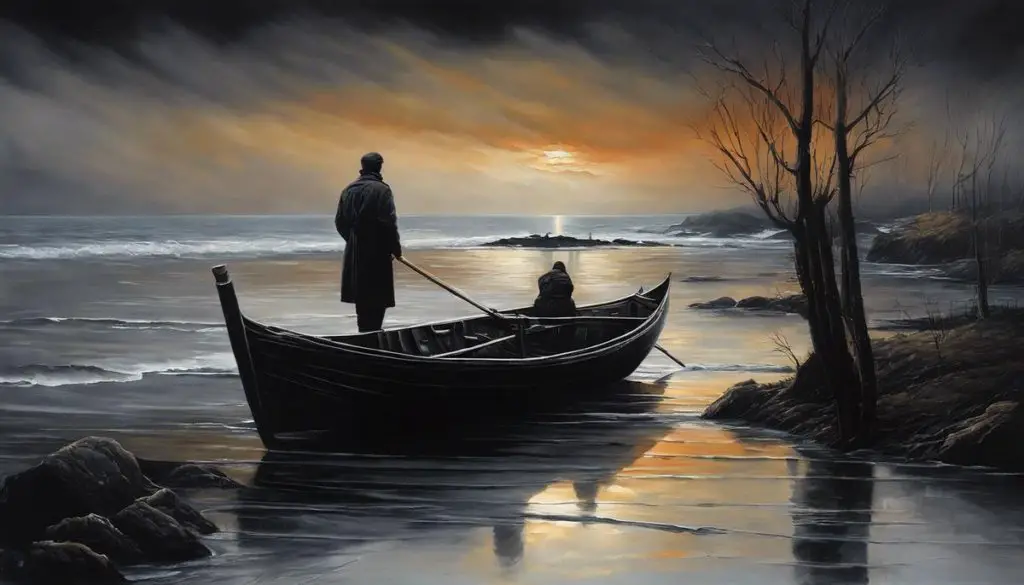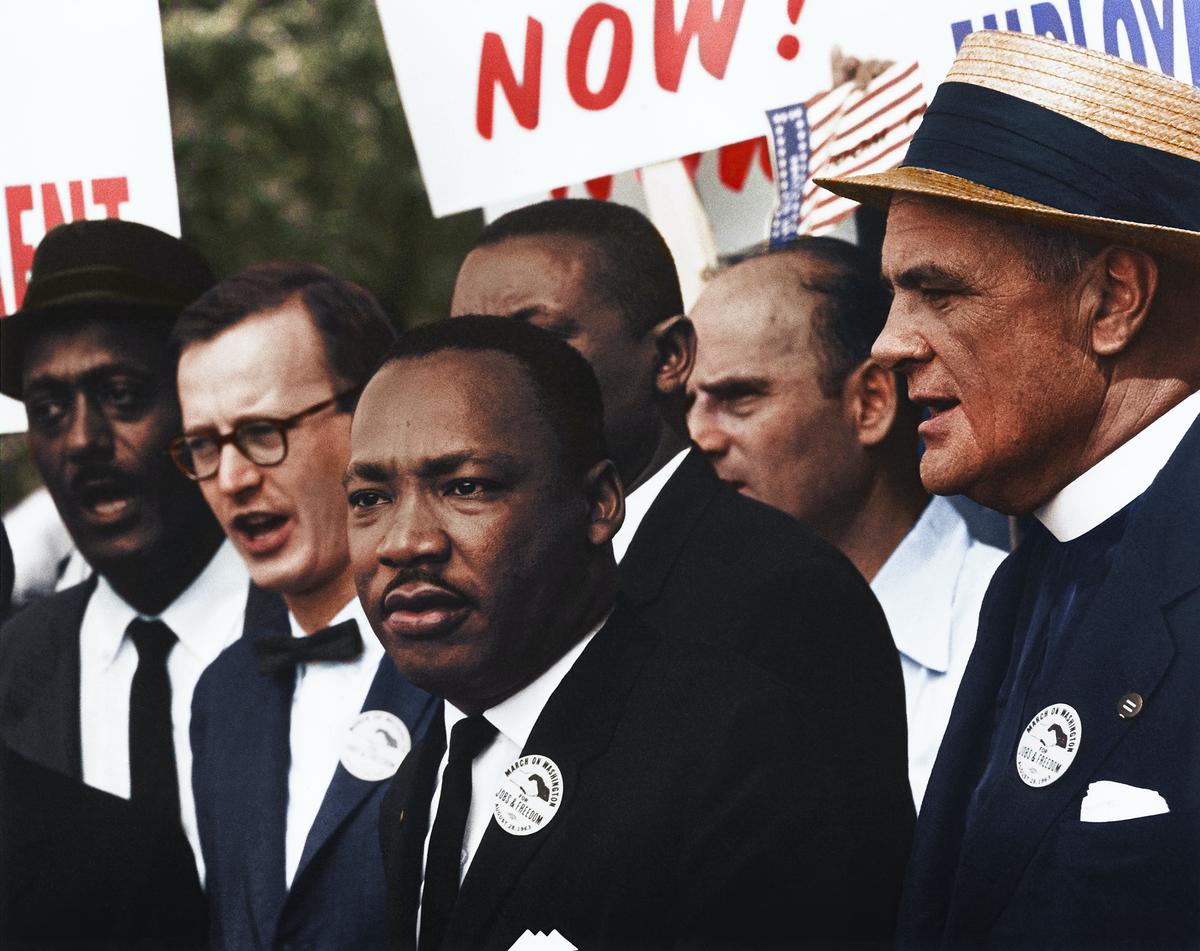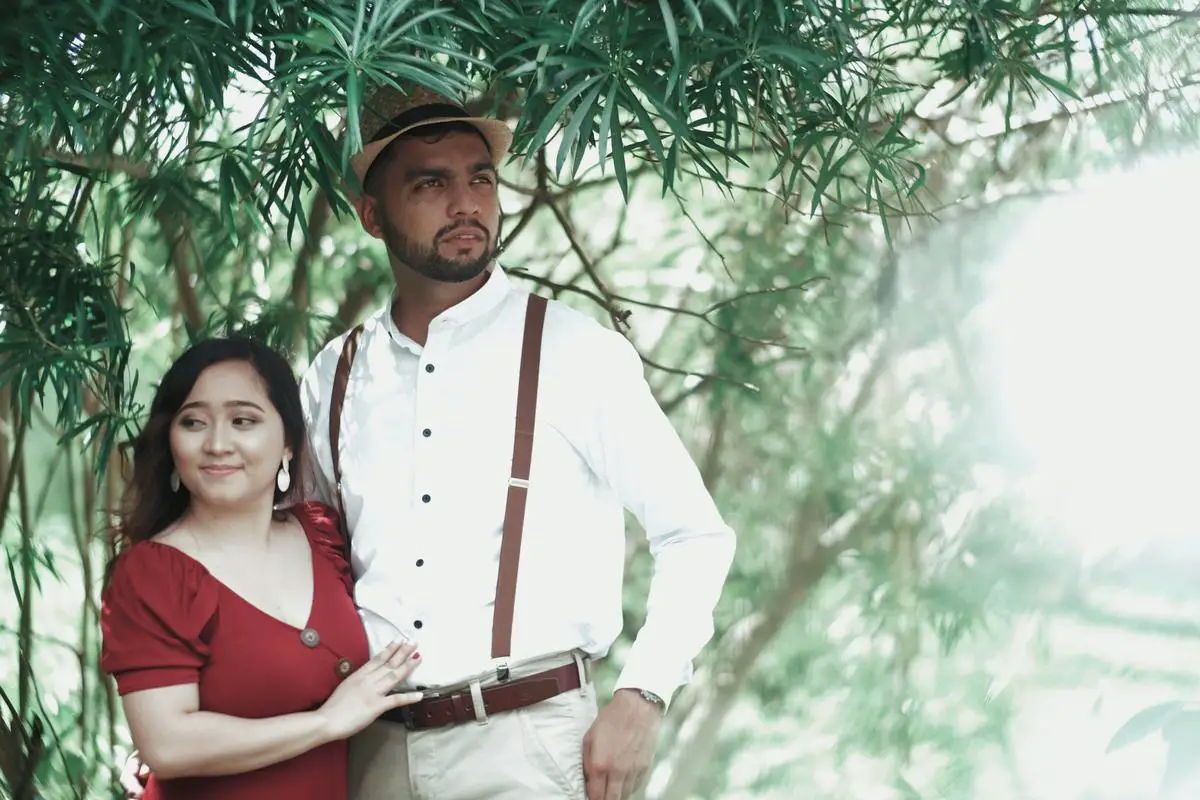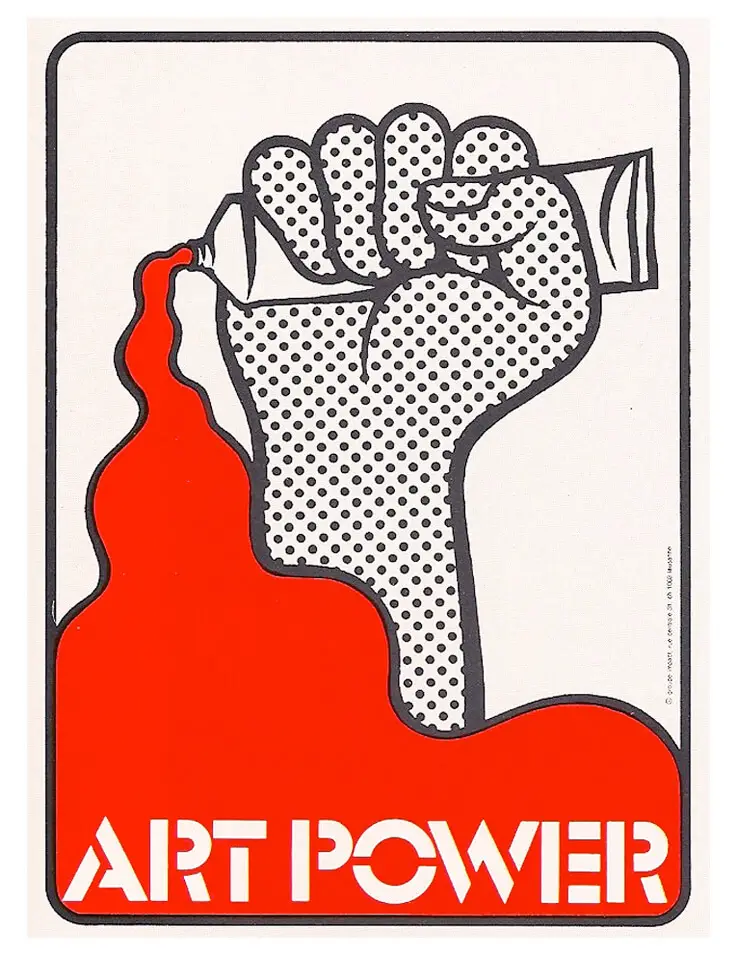The Artistic Traces of Sad Events in History

Throughout the corridors of time, sorrow and creativity have woven an intricate tapestry of reflection and resiliency. From the early scratchings in prehistoric caves to the sophisticated pixels of contemporary art, our ancestors and contemporaries alike have encapsulated their grief, painting poignant images that speak beyond words. The beating heart of loss resonates within their art, serving as a powerful testament to the human experience. Simultaneously, this tapestry explores humanity’s evolving aesthetics, an unspoken dialogue woven through time and tragedy. This dialogue is as varied as the droplets in an ocean, touching upon diverse themes such as the therapeutic role of art in healing, the cultural and artistic significance of memorials and monuments, and the cathartic power of creation to soothe the human spirit amidst unending strife.
Interplay of Sorrow and Creativity
Delving into Shadows: The Impact of Sad Historical Events on Artistic Creativity
Art often voyage past the spectrum of simple adornments; it meanders through the valley of human emotions, serving as a mirror to society. From the ramparts of cave walls to revered installations in modern galleries, it encapsulates a resilient record of our collective experiences. Known to many, historical events play a monumental role in influencing the trajectory of artistic creativity. Yet, how precisely do the more melancholy chapters of our past shape the canvas of creativity?
Catharsis through Colours and Contours
Artistic expression frequently functions as a bastion of catharsis, a process that allows the expulsion of repressed emotions. Unhappiness feeds into the impetus that transforms thoughts into art. In the greyest periods of history, artists have found an avenue to articulate their grief, despair and frustration, giving birth to poignant masterpieces. The endless sea of despair evoked by Picasso’s ‘La Guernica’ bears testimony to this fact. Charged by the atrocious bombing during the Spanish Civil War, this remarkable piece has become a symbol of anti-war sentiment globally.
A Dark Chiaroscuro of Creativity
Moving from the dazzling Italian Renaissance to the brooding Baroque era, the art scene witnessed a tonal shift. This was closely tied to various tragic events like wars, pandemics and socio-religious upheaval. The heavy play of contrasts in Caravaggio’s works – darkness against light – encapsulates the chiaroscuro of despair and hope, symbolising the changing times. This empathetic portrayal of human suffering and resilience acts as tangible evidence of how sorrowful times feed artistic creativity.
Innovating in the Face of Desolation
Adverse historical events have often nudged artists to dismantle traditional manacles and dare into the territories of innovation. The post-World War II era witnessed Abstract Expressionism, which dared to shed tangible forms and narratives. Artists like Jackson Pollock and Mark Rothko embraced the inexpressible, creating effusive works that related more to the emotional spectrum than reality, evoking the undercurrent of trauma and healing brought by the global catastrophe.
The Universal Solace of Shared Sadness
Art thrives on communication and connection. The shared experiences of sadness allow artists to bond with an audience on a profound level. Requiem art installations, like the poignant ‘Shrouds of the Somme’ by Rob Heard, resonate powerfully, beckoning audiences from all walks of life. By honouring the lives lost in World War I, Heard’s installation reminds us not only of our shared vulnerability but also our collective strength.
Every brushstroke, every sculpture, every installation tells a tale, an unabridged anthology of human experiences. Each sorrow-filled moment, every tear-stained chapter in history serves as catalysts for artists. As they grapple and grasp these moments, they create an enduring narrative that shall echo for generations to come. Through the interplay of shadow and light, the yesteryears’ melancholy meets today’s canvas of creativity, the radiance of resilience dancing against despair, thereby proving – in even the saddest of historical events, there’s an indomitable spirit flourishing within the realm of art.

Photo by unseenhistories on Unsplash
Evolving Aesthetics of Grief
Artistic Representations of Historic Sadness and Grief: An Exploration
Venturing deeper into the splendid realm of artistic creations, it is impossible to disregard the transformative power these works possess in chronicling human emotions, especially historical sadness and grief. From the magma of emotional turmoil, crystallises a unique narrative, nurturing a transcendental lineage of sadness that resonates through numerous art forms. While the preceding facets have been discussed in depth, we further explore how such depictions have evolved over the course of time.
The evolution of these portrayals is profoundly immersive, and it commences with the stirring amplitude of sorrow and suffering in sculptural works of the ancient world, which eloquently articulated the universality of human suffering. Think the ‘Laocoön and His Sons’ sculpture, where agony has been etched into stone, a testament to the torment that war inflicts, regardless of the passage of time.
The Renaissance genius Leonardo da Vinci’s ‘Mona Lisa’, a revered masterpiece, subtly captures melancholia under the guise of an enigmatic facial expression. This spells the transition towards abstract portrayals of grief; the layers of subtlety embroidered in the artwork leave ample room for personal interpretation, thereby expanding the emotional playing field.
Fast-forward to the Romanticism era, the intensity of heartbreak was moulded into awe-striking landscapes featuring tumultuous skies and vast oceans. Turner’s ‘Rain, Steam and Speed – The Great Western Railway’ encompasses a grim, ominous atmosphere evoking feelings of solitude and despair, exercising the potency of nature’s elemental prowess as a metaphor for human angst.
Following the industrial revolution, during the modernism and postmodernism times, historical grief found unique interpretations through cubism, surrealism, expressionism, and pop-art, breaking away from conventional figurative narratives. The transition from classic to contemporary demonstrates the ever moulding difference in perceptions. An exemplar is ‘The Persistence of Memory’ by Salvador Dalí, where the melting clocks defy time and represent the impermanence and fluidity of life.
In the contemporary era, performance art and digital art boldly barge into the scene, reflecting the cognitive shift in expressing historical sadness in the interconnected and digitised 21st century. Marina Abramović’s poignant performance piece, ‘The Artist is Present’, invokes raw emotional exchange, subtly conveying collective grief. Simultaneously, digital art pieces, like the open-source ‘404 Error’, cleverly utilise the digital medium to represent loss and absence, an articulate symbol of our technology-ridden era.
In essence, the journey from literal expressions to abstract portrayals, from solid sculptures to digital imprints, underlines the evolution of depicting historical sadness and grief in art. Worth noting is the revolutionary shift towards global empathy, woven subtly within these works, rebelling against the myopic vision of sorrow. It’s not just the art that has evolved, but also the collective consciousness, broadening the dialogue of shared human experiences enshrined in the fabric of art. The evolved narrative encapsulates not only the personal but also the larger historical sphere, catalysing a dialogue that transcends borders. Art, indeed, is the canvas of human resilience, mapping the contours of historical sorrow, confirming yet contradicting T.S Eliot’s claim of April being the cruelest month, for through shared sorrow, arises a cathartic remembrance of loss, and a universal connection, potent and unbowed.

Art as a Tool for Healing
Delving into the Stream of Harmony: Art as a Balm for Historical Sadness
Art, a quintessential reservoir of emotional expression, serves not only as a mirror for the societal psyche but also a sanctuary for mending collective bruises of our past. Historical heartaches are tales blooming from every corner of the world, told and retold through art transcending generations and geography. It serves as an escape, a healer, subtly sewing together the world’s pain into a shared tapestry of resilience.
Archiving heartache: Silent whispers of history in art as a healing
Silent witnesses to history, art forms like cave paintings were early storytellers of human misery, charting a path towards eventual relief. Often, comfort is sought in the details of everyday life, with artists like Dutch painter Vermeer masterfully depicting ordinary scenes, thereby soothing a populace wracked by war. Art could spin a safe haven from mundane moments whilst the world around plummeted into chaos.
In navigating through waves of shared distress, art conjures solace by reimagining familiarity with the throbbing ache of global tragedies. The ruins of the ancient world offered artists remnants of past sadness to infuse into their craft. Bereaved of their grandeur, these deconstructed edifices rose through art, redeeming their histories.
Redefining landscapes of sorrow through Romanticism
The Romantic era marked a significant shift in art towards landscapes mirroring despair incubated over centuries of suffering. Painters like Caspar David Friedrich explored themes of solitude and Der Wanderer über dem Nebelmeer (Wanderer above the Sea of Fog) is a potent example of weaving desolation with the stunning beauty of a landscape. Nature’s raw essence served as canvas to articulate historical melancholy, softly diminishing its intensity.
Revolutionising emotional articulation: Modernism and Postmodernism
The emotional turmoil of the world wars profoundly impacted the art landscape. Cubism, surrealism, expressionism, pop-art, and more danced under the umbrella of Modernism and Postmodernism. They drastically transformed the panorama of expressing historical sorrow. Salvador Dali’s surreal landscapes, for example, were nebulous dreams forged in the fires of a historically disturbed epoch.
The curtains of contemporary expressions
Contemporary art in the 21st century has been a hotbed of innovation. Performance and digital art have grown into prominent platforms, narrating tales of societal woe in novel and engaging ways. The likes of Marina Abramović, through visceral performances, face historical pain head-on, fostering a catharsis and a healing process that begins from acknowledgment.
Art: Charting the journey towards global empathy
With evolving dimensionality, the palette of art has transformed from literal to abstract representations. This shift underscores the quest for universal empathy, ringing louder with every stroke, mould, pixel, and motion. It forms an emotional pact between the artist, viewer, and history, sculpting a narrative that palpitates with life and resilience.
Thus, art, as a global mosaic assembled from historical shards of shared sorrow, reflects our collective resilience. It beckons us towards a place of acceptance, healing, and, ultimately, a nuanced understanding of shared human experience.

Memorials and Monuments: The Art of Remembering
Constructing Historiographies with Stone and Steel: Memorials and Monuments
Exploring the artistic dimension of historical documentation, the creation of memorials and monuments draws a solid line between major historical events and the artistic sprouting of shared human sentiments. This connection unveils itself most fervently in the face of tragedy and sorrow, birthing physical embodiments of collective memory etched in heartache.
Just as authors record history with ink, artists encapsulate the essence of potent historical emotions within these stone and steel structures. They stand as silent storytellers, guardians of societal experiences that bear tales of grief yet resilience, promising an everlasting resonance with future generations.
Delving into the impacts of historical disasters uncovers the deep-seated influence that they have on these physical constructs. A monument can often be seen as an artistic expression of societal grief.
The haunting solemnity of The Vietnam Veterans Memorial, for instance, resonates the remorseful gravity of the Vietnam war. The structure’s stark lines and reflective surface serve as a mirror, engaging observers in an intimate confrontation with the wounds of history. In the same vein, the harrowing Auschwitz-Birkenau Memorial, a stark reminder of the Holocaust atrocities, translates the depth of historical anguish into an international symbol for peace, unity, and reflection.
The concept of architectural mourning transcends cultural barriers. The A-Bomb Dome in Hiroshima, left standing in skeletal ruin, echoes the voices of the perished, reinforcing the futility of warfare and advocating peace. The Whispering Monument in Indonesia, dedicated to the victims of the 2004 tsunami, stands tall, a symbol of healing and hope amidst tragedy, with each wave-like curve narrating stories of sorrow and survival.
The emotional gravitas of these art-driven monuments is undeniably intertwined with the historical events they represent. They serve as sombre catalysts for communal recovery, tuning the frequencies of collective heartache into shapes and structures that echo through the eons.
Beyond the commemoration of lost lives, monuments and memorials crafted in response to tragic history often project messages of peace, resilience, and hope. They embody the spirit of human endurance, fostering global empathy, and bridging cultural and temporal divides. Through this artistic lens, it is clear that the remnants of sorrowful history continue to shape not only the landscapes of our physical world but also the ever-evolving narrative of humanity’s shared resilience.

Photo by ejagumbay on Unsplash
Art, conceived amidst the crucible of sorrow, serves not only as a testament to human resilience but also as a beacon of hope. The transformative power of grief, its ability to inspire timeless works of art, is a testament to our capacity for renewal and spiritual growth. Its potency seeps into the very stone and canvas of memorials, invoking remembrance and serving as enduring symbols of tragic events. Art stands as a refuge in times of sorrow, comforting the bereaved and inspiring unity in the face of adversity. Its role in societal and individual healing underscores its therapeutic potential, etching a narrative of reconciliation and solace. From the ancient scriptures etched into cave walls to our modern digital murals, it is clear that art remains an unbroken thread, skilfully weaving our collective sorrow into tapestries of hope, healing and remembrance.
Recommend0 recommendationsPublished in Art History







